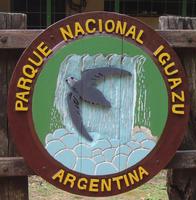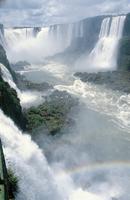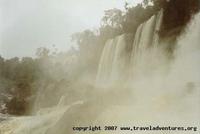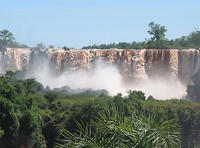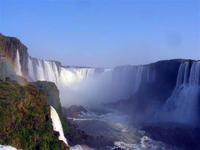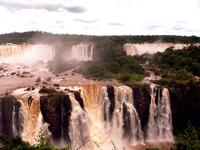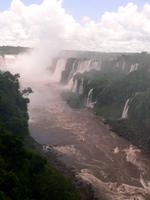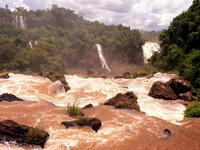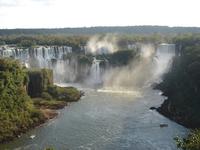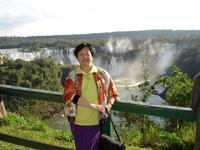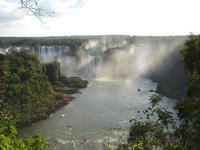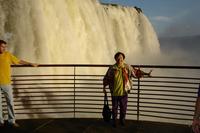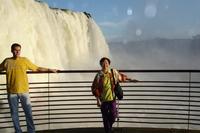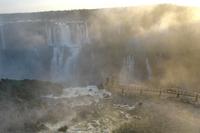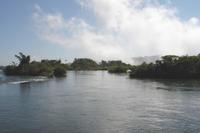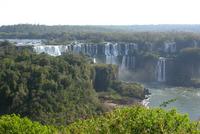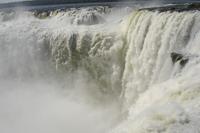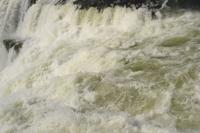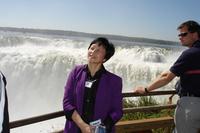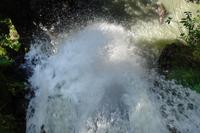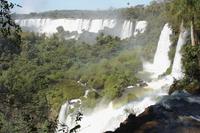You are in: South America -> Argentina -> Iguazu National Park, and traditional search or Image Gallery will yield results of this site only
Iguazu National Park
| Site number: | 303 |
|
| Type of site: | Natural | |
| Date of Inscription: | 1984 | |
| Location: | South America, Argentina, Province: Misiones - Region: Nord-Est | |
| Video: |
|
Up to 75 images are shown here. Click on each for more details or on Image Gallery for more images.
Six official UN languages:
Arabic,
Chinese,
English,
French,
Russian,
Spanish
Other languages: Dutch, Hungarian, Italian, Japanese, Lithuanian, Polish, Portuguese, Swedish
Other languages: Dutch, Hungarian, Italian, Japanese, Lithuanian, Polish, Portuguese, Swedish
| Description: | Situated on a basaltic line covering the border between Argentina and Brazil an 80 m high and 2,700 m in diameter semicircular waterfall stands at the heart of this site. The breathtaking waterfall consists of many cascades that create a broad mist. 2000 vascular plants and various local wildlife reside in the encompassing subtropical rainforest, including tapirs, giant anteaters, howler monkeys, ocelots, jaguars, and caymans. --WHMNet paraphrase from the description at WHC Site, where additional information is available. | |
| The Iguazú National Park is a national park of Argentina, located in the Iguazú Department, in the north of the province of Misiones, Argentine Mesopotamia. It has an area of 550 km² (212 sq mi). The park was created in 1934 and it contains one of the greatest natural beauties of Argentina, the Iguazu Falls, surrounded by the subtropical jungle. Across the Iguazu River lies its Brazilian counterpart (Iguaçu National Park). Both sites were declared World Heritage Sites by UNESCO, in 1984 and 1986. The fauna of the park includes several endangered species: the jaguar, the tapir, the ocelote, the tiricas, the anteater, the pavas de monte, the jungle eagle, and the yacaré overo. One can also find birds like the vencejo de cascada and large toucans, mammals like the coatí, and a diversity of butterflies. Also the Vinaceous-breasted parrot. The Iguazú River ends in the Paraná River 23 km beyond the falls, after a 1320 km course. Inside the park it becomes up to 1,500 m wide and turns first south, then north, forming a large U-shape. Its banks are densely populated by trees, including the ceibo (Cockspur coral tree), whose flower is Argentina's national flower. The flora of the park also features lapacho negro and lapacho amarillo (family Bignoniaceae), as well as palmito trees and the 40-metre-high palo rosa (family Apocynaceae). The area of the park was inhabited already 10,000 years before the present, by the hunter-gatherers of the Eldoradense culture. They were displaced around 1,000 CE by the Guaraní, who brought new agricultural technologies, and were displaced in turn by the Spanish and Portuguese conquistadores in the 16th century, though their legacy is still alive in this area (the name of the park and the river is Guaraní y guasu, "large water"). The first European to visit the zone was Álvar Núñez Cabeza de Vaca, in 1542; Jesuit missions followed in 1609. --Wikipedia. Text is available under the Creative Commons Attribution-ShareAlike License. | ||
| Source: | http://whc.unesco.org/en/list/303 | |
| Source2: | http://whc.unesco.org/en/list/303/video | |
| Reference: | 1. UNESCO World Heritage Center, Site Page. | |


 NHK World Heritage 100 series
NHK World Heritage 100 series